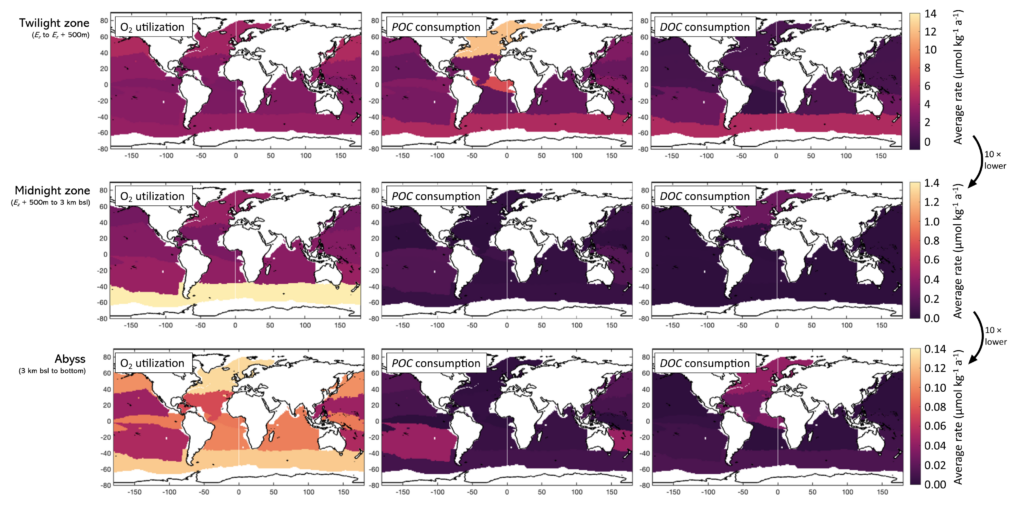
ESSIC/CISESS Visiting Associate Research Scientist David S. Trossman is co-author on a new paper in Global Biogeochemical Cycles titled “Respiration Patterns in the Dark Ocean”.
In the dark ocean, many organisms rely on oxygen. The growing loss of oxygen observed across the ocean threatens these organisms. However, the nature of the organic material being used as an energy source for respiration, the rate of respiration, and its spatial distribution are still poorly known in the deep ocean. This impedes researchers’ ability to assess how marine organisms might respond to environmental changes. Respiration rates are typically approximated by assuming that the sea surface is in perfect equilibrium and that the effects of ocean mixing are negligible. In this paper, the international team relaxed these assumptions by using datasets of dissolved oxygen concentrations, density, seawater age, dissolved organic carbon (DOC), and particulate organic carbon (POC) to derive true oxygen utilization rates (OUR) and perform budget analyses in 10 oceanic regions.
The researchers found that although POC and DOC consumption rates were globally consistent with OUR, they underestimated OUR in the deep ocean. This suggests that there is significantly more oxygen utilization near the seafloor than previously believed. The study also demonstrates that measurements of dissolved oxygen concentrations, DOC, and POC can all be reconciled in an integrated global budget.
David Trossman is a physical oceanographer, by training, but often crosses traditional disciplinary boundaries. He received his PhD at the University of Washington in Seattle and took a circuitous route to his current position as a Visiting Associate Research Scientist through the CISESS cooperative agreement between NOAA STAR/NESDIS and the University of Maryland-College Park. In general, his research has taken two trajectories: 1) He has studied the physical and biogeochemical consequences of ocean circulation and mixing as well as the interactions between the ocean and other components of the Earth system in order to understand and improve the realism of Earth system models. 2) He has also probed the information content of observable physical and biogeochemical data sources about difficult-to-observe quantities of interest to advance the reconstruction of the ocean’s historical conditions through statistical techniques.
To access the paper, click here: “Respiration Patterns in the Dark Ocean”.





